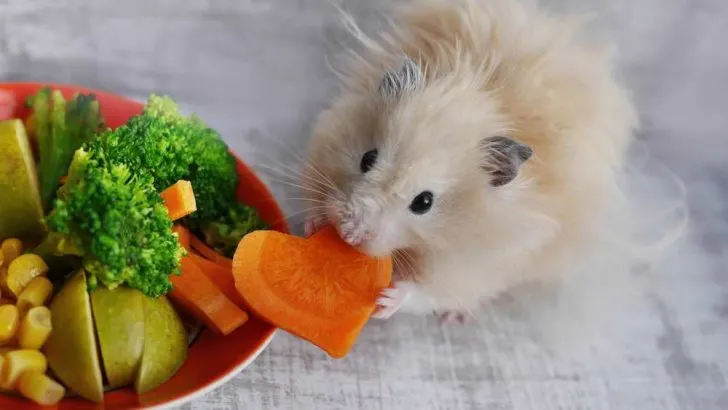Wondering what to feed that adorable little hamster you just bought? There is plenty of food these little animals find tasty, and we have prepared a list of them just for you!
We can all agree that dogs and cats are the basic pets out there, right? Sure, they are loving animals and fun to be around, but have you ever considered owning a hamster? If this cute furball is on your pet list, you might need some basic guidelines first- For example, what can hamsters eat? Well, a lot of things – from fresh veggies to meat slices, but we’ll get to that.
If you are interested in bringing a pet hamster into your home, then you should know how to keep it healthy by feeding it proper food. So, we advise you to stay with us and note down the facts that we have prepared – you’ll certainly need it!
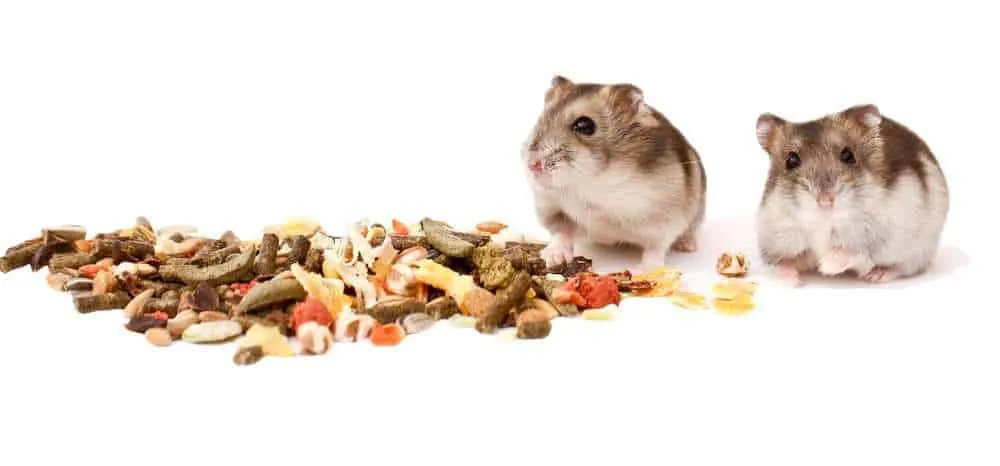
What Can Hamsters Eat? The Ultimate Hamster Food List
Your hamster pet is an omnivore, so that means that his food choices have been expanded. So, your hamster is not limited to plant products – there is much more you can put in his food bowl.
We are here to find out what his choices are. Let’s start by listing down the veggie checklist. Here are some healthy ingredients you can feed your new pet hamster.
Fresh Fruits & Vegetables
- Apple slices (no seeds)
- Bananas. See Also: Can Hamsters Eat Banana Chips?
- Broccoli
- Carrots
- Cherries
- Cucumbers
- Grapes
- Peas
- Potatoes (cooked)
- Strawberries
- Blackberries
- Peaches
- Pears
- Nectarines
- Snap Peas
Healthy means nothing if there are no greens involved, so try adding some of this to your hamster’s diet.
Healthy Greens
- Lettuce. (See Also: Can Hamsters Eat Romaine Lettuce?)
- Cabbage. (See Also: Can Hamsters Eat Red Cabbage?)
- Clover
- Dandelion
- Collard
Can hamsters eat bread products? Sure they can but in moderate quantities. Here are a few.
Bread And Pasta
- Bread (no sugar or additives)
- Dry grains
- Cooked brown rice
- Wholegrain pasta
- Corn flakes, oat flakes
- Unsalted biscuits (Can Hamsters Eat Salt?)
Nuts are a very healthy ingredient, and only a few animal breeds are able to digest them. Your hamster is one of them, so feel free to add some to their daily meals.
Nutritious Nuts
- Sunflower or pumpkin seeds (dried)
- Hazelnuts
- Peanuts
- Walnuts
- Sesame seeds
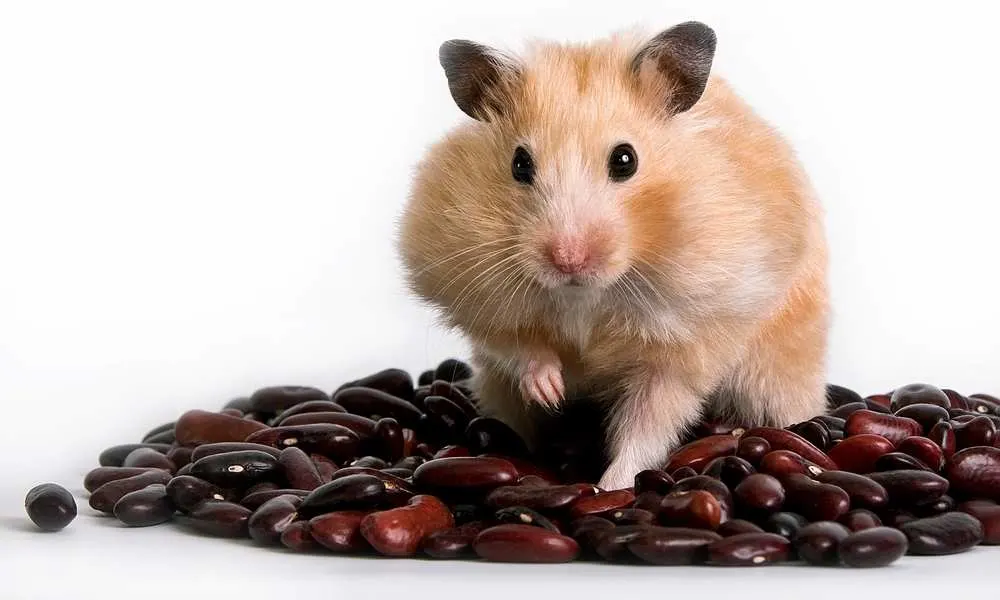
Foods To Avoid
Although the recommended food list is a pretty long one, there are still some ingredients that mustn’t be near your hamster when he is eating.
Your kitchen probably possesses some toxic foods that you might want to exclude from your hamster’s diet.
Be careful around these items in your kitchen:
| Bitter almonds: | Bitter almonds are much more dangerous than sweet ones because they contain strong enzymes. |
| Dirty vegetables: | If the vegetable that your hamster eats is not properly washed, it could easily lead to food poisoning. |
| Tomatoes: | Sadly, tomatoes are considered toxic for many animals because they contain a lot of acidic fluid. |
| Beans: | Feeding your hamster beans is a huge risk because these veggies are poisonous if they are raw. |
| Sugars: | By sugary foods we don’t mean just sweets – this also includes sweet apples, sweet potatoes, etc. |
| Junk food: | Fast food is never a good idea and feeding your hamster a cheeseburger can turn out to be deadly. |
| Fatty meats: | Fatty meats like beef are too much for this little guy – hamsters will have trouble digesting such strong meat. |
| Raw rhubarb: | If you’re thinking of feeding your hamster rhubarb – don’t – it can easily cause urine and bladder problems. |
| Celery: | The texture of a celery plant can make your hamster choke within minutes of biting it. |
| Garlic: | Garlic and onions should never be on your pet’s food list – they cause indigestion and blood disorders. |
Among the foods listed above, sugars pose the greatest risk for your hamster. So, when shopping for some hamster food, make sure that it DOESN’T INCLUDE:
- Monk food
- Sucrose
- Glucose
- Corn syrup
- Fruit juice
- Galactose
- Maltose
- Panocha
- Sucanat
Statistics
How about we bring the nutritional value and requirements for hamsters closer to you by showing some statistics?
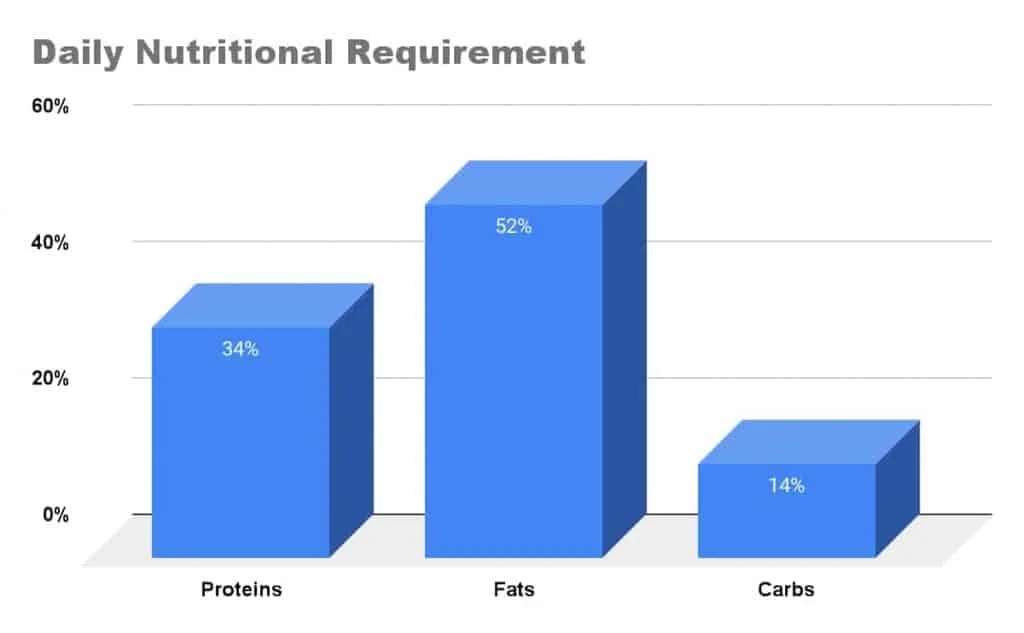
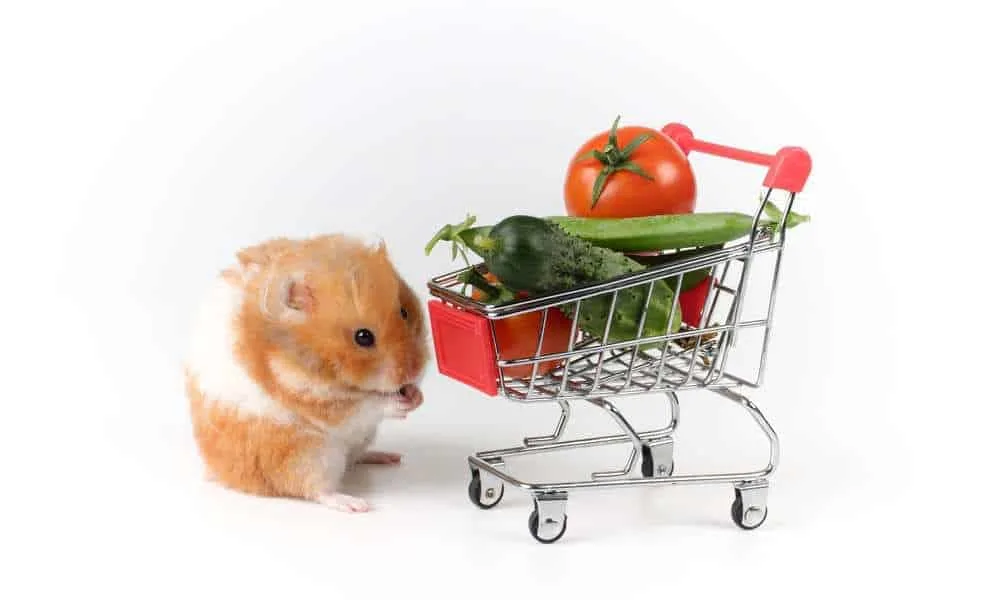
Store-Bought Choices
Having a review of the most commonly bought hamster foods can come in handy if it’s your first time shopping for this type of nourishment.
So, if you are new at this whole hamster-owning, we can give you a helping hand by making a list of the top 8 commercial pet foods you should get your hamster.
1. Kaytee Fiesta Hamster Food – 3 pounds
- A healthy mix of fruits, vegetables, and grains
- Good for hamsters who have poor digestion
- Contains natural antioxidants
- Good for dental health
Kaytee is a famous pet food brand. Besides hamsters, they also make food for cats and dogs.
2. Oxbow Animal Health Hamster Food – 1.6 ounces
- A full-nutritional value
- Added vitamins and minerals
- No sugar, nuts, or seeds
- High levels of fiber
3. Wild Harvest Hamster Food – 4.75 pounds
- Contains a healthy mix of grains and vegetables
- Hamsters are often drawn to its taste
- Comes in a convenient container
- Rich in antioxidants and omega-3 acids
4. Sunseed Dwarf Hamster Formula – 2 pounds
- Contains specific meat for dwarf hamsters
- Rich in probiotics and antioxidants
- Contains vitamins E and D
- Good for the immune system
- Promotes regular digestion
5. SupremePetfoods Tiny Friends Hamster Food – 1.4 pounds
- A balanced diet for your hamster
- Contains great amounts of A and D3
- High levels of calcium
- No added sugar
6. Higgins Sunburst Gourmet Hamster Food – 2.5 pounds
- Can be used to feed both hamsters and gerbils
- No artificial colors or sugars added
- Contains legumes and fruits
- Contains amino acids and omega-3 acids
7. Vitakraft Vitasmart Hamster Food – 1.95 pounds
- A healthy mix of seeds and legumes
- Meets all nutritional requirements
- Makes your hamster’s coat shiny
- Contains high levels of fibers and proteins
8. KayteeFortiDiet Hamster ProHealth Hamster Food – 5 pounds
- Simple formula but beneficial for health
- Contains probiotics
- Can be given to hamsters, rats, and mice
- Good for immune system and digestion
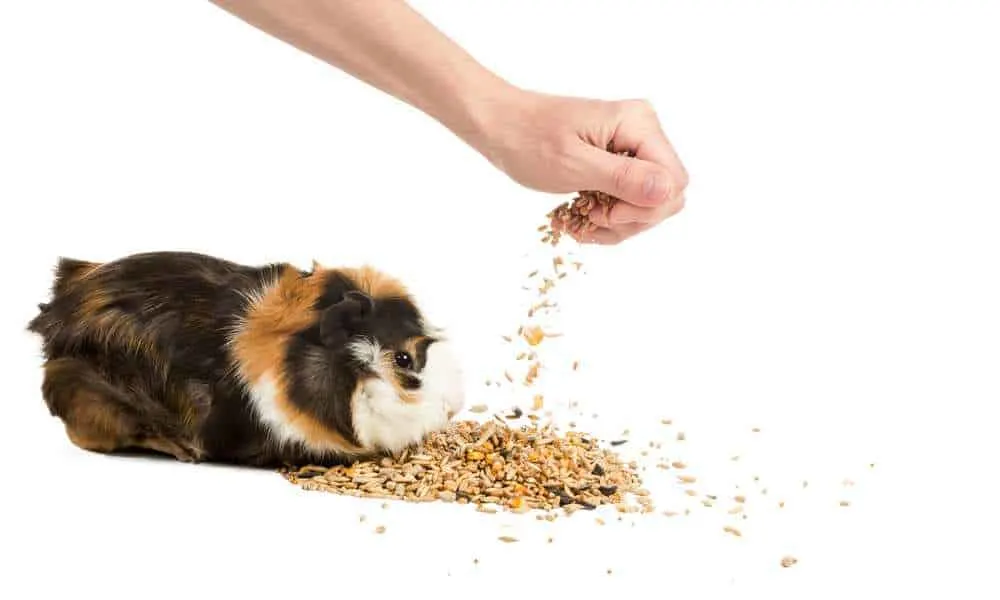
A Beginner’s Guide To Feeding Your Hamster
Behold – a simple step-by-step guide on how to correctly prepare food for your hamster and feed it. It’s actually straightforward, all you have to do is:
- Buy the right food
- Feed it to the hamster
If you’re a rookie, you’ll find these guidelines helpful.
BUYING THE RIGHT FOOD
| Purchasing commercial food | Of course, the first thing you should do is go to the pet store and buy some good-quality hamster food. However, you must pay extra attention to the content of the food. |
| Adding vegetables and fruits | You should consider adding some healthy vegetables and fruits with or after you have poured the food into the bowl. This will undoubtedly contribute to its immune system and overall health. |
| Including some treats | Including some extra treats for your hamster is a must, but you shouldn’t go overboard. Try including some biscuits once a week. |
| Avoid toxic foods | You should know both sides of the food list – the healthy and unhealthy ones. Avoid toxic ingredients such as chocolate, almonds, garlic, etc. |
Okay, we’ve successfully covered the first part of the feeding guide – easy right?
Now, we come to the fun part, the one that actually involves the feeding process.
THE FEEDING PROCESS
| Feed your hamster one tablespoon of pellets per day | Pellets should be included in your hamster’s diet, but you must pay attention to the quantity. One tablespoon a day is enough. |
| Hand-feeding your hamster | After you’ve had your hamster for some time, it would be good to try some hand-feeding. This will increase its trust in you as the owner. |
| Monitor the weight | Hamsters can easily become overweight. That’s why you should carefully monitor their weight and pay attention to the amount of food per day that they consume. |
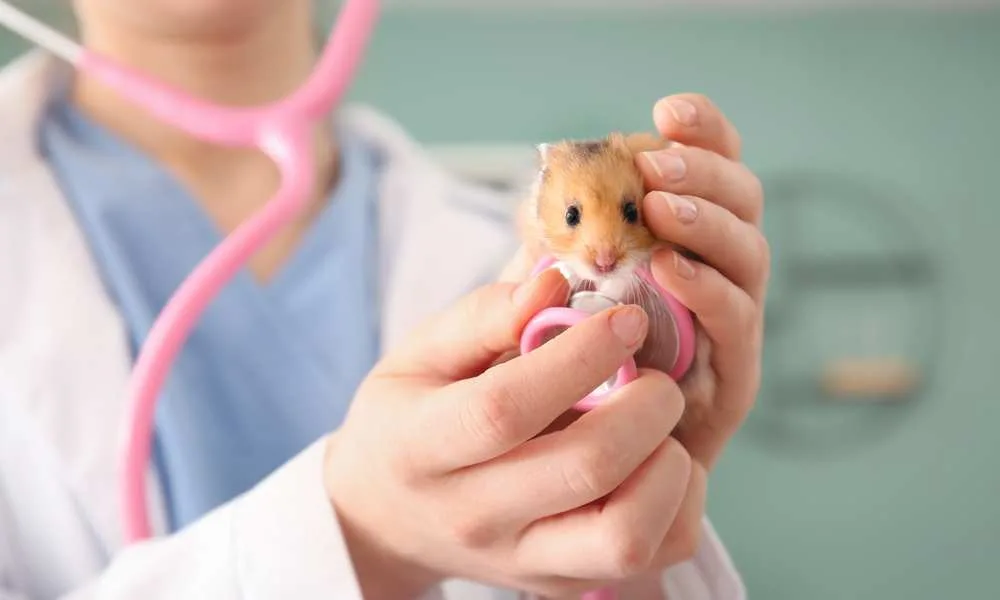
Danger Of Food Poisoning
We mentioned earlier that you could poison your pet hamster by not washing the vegetables and fruits you feed him. Unfortunately, this is 100% true.
Food poisoning is mostly preventable, and we are going to show you how to do that in 3 ways:
1. Avoiding Toxic Foods
Asking a professional (vet) – a cautious owner will probably ask his local vet about what he should and shouldn’t feed his hamster. If you go to the vet with this concern, you will most likely be given a list of toxic food which could be dangerous to your little pet friend.
Washing fruits and vegetables thoroughly – we cannot stress enough the importance of cleaning your vegetables before including them in any meal. If you decide to give your hamster some apples or peaches, wash them three times just in case.
No moldy or rotten food – just like you wouldn’t like a bite of some moldy, rotten food that’s been in the pantry for too long, doesn’t mean that you should give it to your pets. Hamsters won’t be able to digest bad food and will most likely suffer stomach problems if they try.
2. Clearing The Environment
Keep an eye on them when they’re outside – If you have let your hamster play outside his cage for a while, you should keep an eye on it and make sure that it doesn’t go near some toxic food.
WARNING! These animals move fast, so you’ve got to move faster.
No smoking in their presence – Hamsters are such tiny animals, and the chances of them handling the intense smoke coming from your cigarette are low – very low. So, sustain yourself from smoking and save your hamster’s health.
Avoid using rat poison – We all know how dangerous and not to mention deadly rat poison can be. That’s precisely why you shouldn’t use it around your pet hamster. Even the slightest drop of this strong substance can kill your hamster.
Remove toxic household plants – Maybe you didn’t know this, but there are some plants that are in your house and are highly poisonous to your hamster. Here’s a list of some plants that emit toxic substances:
- Cacti
- Azaleas
- English ivy
- Hydrangea
- Lilies
- Clematis
Keep your medication far from reach – If you are currently taking some medications that happen to be strong, be careful and don’t leave them near your hamster cage. Accidents happen, and your hamster might mistake one of your pills for treats.
3. Taking Care Of A Poisoned Hamster
Identifying the symptoms – Sometimes, accidents happen no matter how careful you have been around your hamster. If you have noticed some symptoms like vomiting and difficulty breathing, your hamster probably ate something bad, and now he needs help.
Taking your hamster to the vet – If you have identified the signs, and they appear to be more severe than you thought, you should take your hamster to the vet’s office immediately. With food poisoning, timing is crucial. The longer you wait, the more danger you put your hamster in.
Take the substance/food with you – If you have witnessed your hamster taking the bad food or a dangerous substance, it would be best if you took it with you directly to the vet. Once the vet examines your hamster and its poisoning cause, it will be a lot easier for him to prescribe medication.
Follow the instructions your vet gives you – If your vet has given your hamster some medication or a specific list of things you should do when you get back home, you should follow it. Avoiding medication or any other treatment recommended by the doctor threatens your hamster’s health even more.
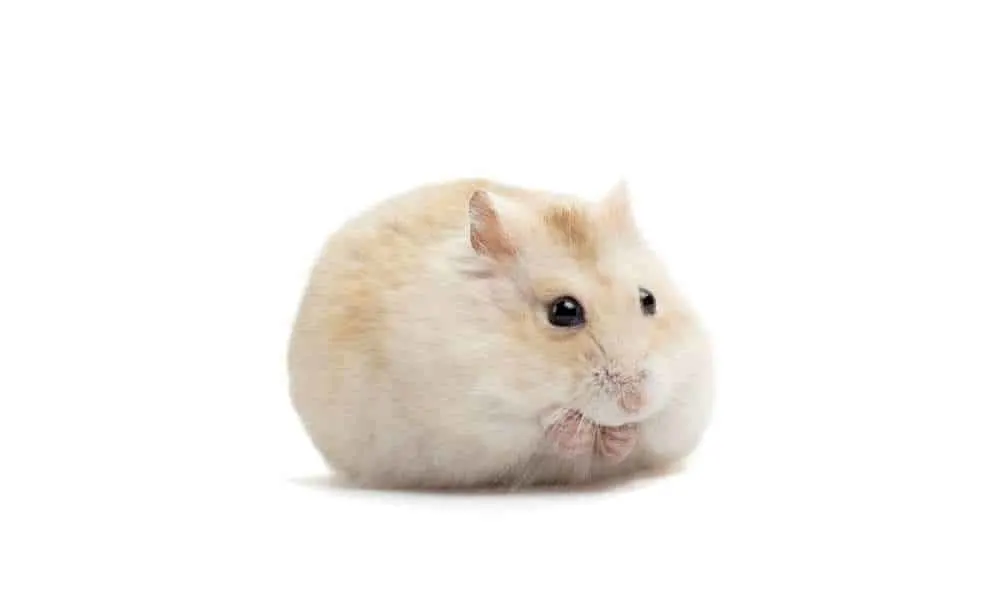
Is My Hamster Obese?
Unfortunately, obesity is very common for hamsters. There are 3 reasons why your hamster appears bigger than usual.
A healthy hamster will weigh somewhere around 6-7 ounces, and you will know this by monitoring his weight regularly. So, if you notice that your hamster has been putting on some extra weight, it might be because of:
- The type of food you’re feeding it
- The amount of food you’re feeding it
- Lack of exercise
| Food type: | One of the most common indicators of obesity is the type of food you are giving to your hamster. Chubby hamsters are adorable, but giving them foods with excessive amounts of calories is dangerous. |
| Food amount: | Another important indicator is the amount of food you put in the bowl. Hamsters love to eat, but that doesn’t mean that you keep the food bowl overflowing with food. |
| Exercise: | Exercising is crucial for your hamster’s health. You can contribute to this by including some toys or a running wheel in your hamster’s cage. This will help a lot. |
Since obesity is a very common health setback with hamsters, here are a couple of tips that can help you and your hamster deal with this:
- Look for food that is low in carbohydrates but high in fibers and protein
- Check the label for any unwanted ingredients (in case of allergies)
- Reduce the amount of food you give – measure by using teaspoons
- Monitor your hamster’s exercise levels – these animals can become “lazy” if depressed
- Buy a hamster ball – this will boost their energy levels
- Take your hamster to the vet to get examined regularly
- Pay attention to the water quality
- Regularly trim their teeth – a broken or crooked tooth can be very dangerous.
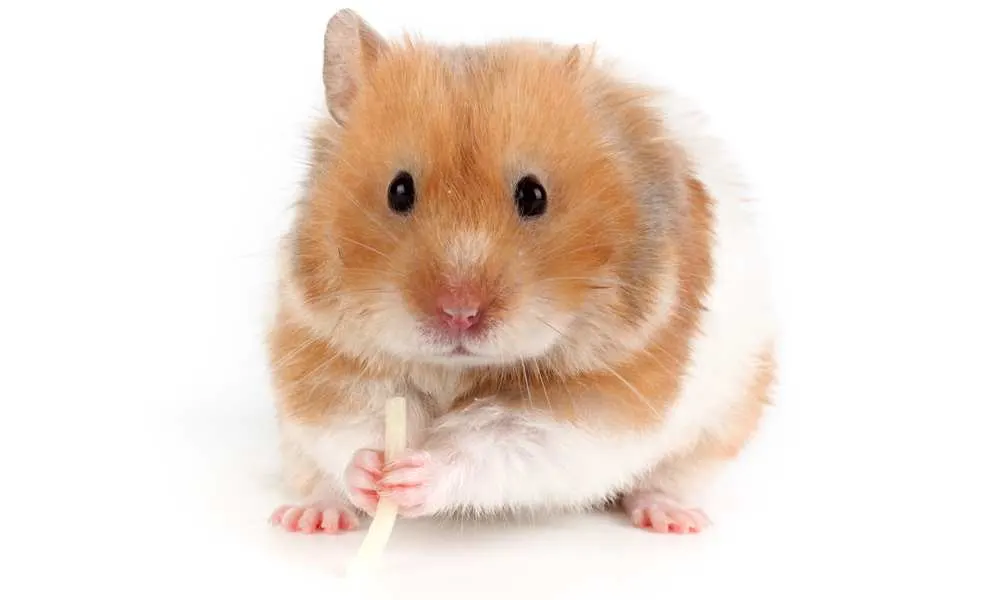
Training – Voice, Food, Playtime
You might have a list of potential treats prepared, but what can you do with them?
A lot, actually. When it comes to hamster training, you can use food as your guide. Training a tiny house animal like this can sometimes require a lot of patience and even more food.
Let’s note down some crucial training tips for your pet hamster:
| Getting accustomed to your voice: | The first thing you should pay attention to when you get your hamster is that it gets used to hearing your voice. You need to speak around your hamster if you want it to obey later commands. |
| Handing out treats: | After your hamster has grown a bit, you can start teaching him tricks with the help of treats. Their motivation will jump dynamically if there is a tasty biscuit involved. |
| Enjoying playtime | Engaging in playtime is not just about running around with your hamster – in this way, your hamster is able to explore the environment he is in. Also, you can throw in some treats for good behavior. |
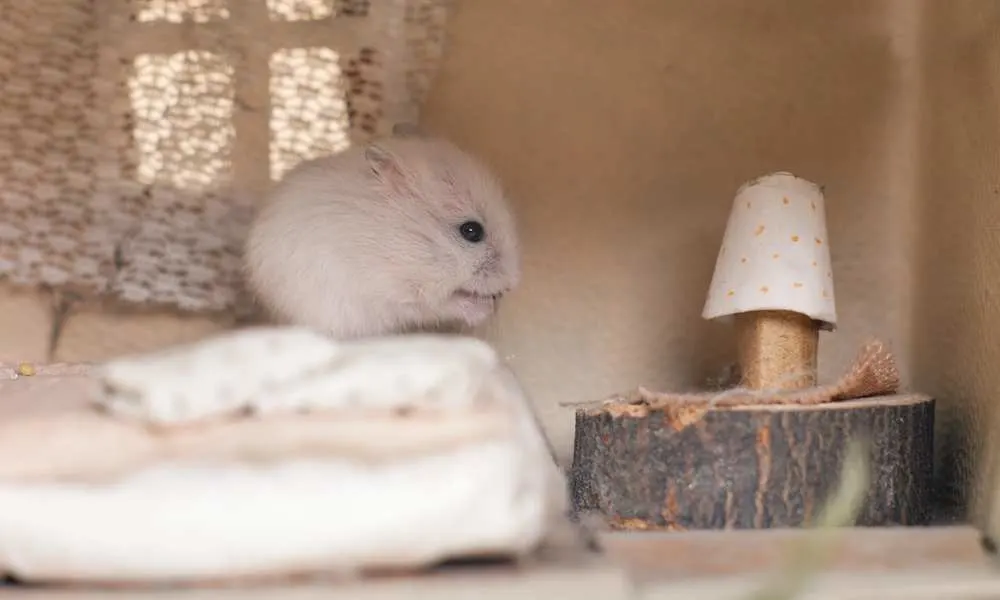
You Must Know What To Get Your Hamster
Knowing what to feed your hamster isn’t enough. You should also know what to get your hamster so that it can feel comfortable in its new environment. The list is not long, and here are some essentials that you should start looking for:
- A cage for your hamster – Bear in mind that hamsters like to run around and are active almost all of the time, so don’t go for the minimum-sized cage and don’t let the pet shop foo you.
TIP: Never order hamster cages online!
- Bedding and nesting material – For your hamster to feel comfortable in his new cage, you need to add some bedding material. Make sure that you buy enough hay because you will need to replace it regularly. Also, putting a couple of greens inside to munch on is a good idea. You can also go with paper beddings, but that is a better choice for guinea pigs. Read More: Can Hamsters Eat Timothy Hay?
- Food and water bowl – Generally, food and water bowls come with the cage. However, sometimes you have to go and search for them separately. The ideal food bowl you’re looking for would be a ceramic one – why? Because your hamster runs a lot, it could easily trip a plastic one over. Next, the water bowl should be bigger in size. Hydration is essential for these energetic animals, so look for a water bowl that can hold 12 ounces.
- Food mixes – Today, food mixes with treats inside them are an excellent choice for your hamster. This dry commercial food is your go-to when you are out of ideas. Also, these bags are pretty big, so you will need a refill every five months.
- Toys and tubes – No hamster cage can be complete without toys and tubes. You will need some cardboard rolls, plastic toys, etc. Some people recommend getting wooden toys so your hamster can chew on them as well.
- The running wheel – This might be the critical item for your hamster. Hamsters spend most of their time on this wheel – some can even run up to 5.5 miles. After they are finished with this exercise, they go straight to the food and water bowl.
- Travel and transport handle – If you happen to travel a lot, you might want to bring your hamster with you. In that case, you should be looking for some extra handles that you can adjust to your hamster cage. This will make the cage fit for transport.
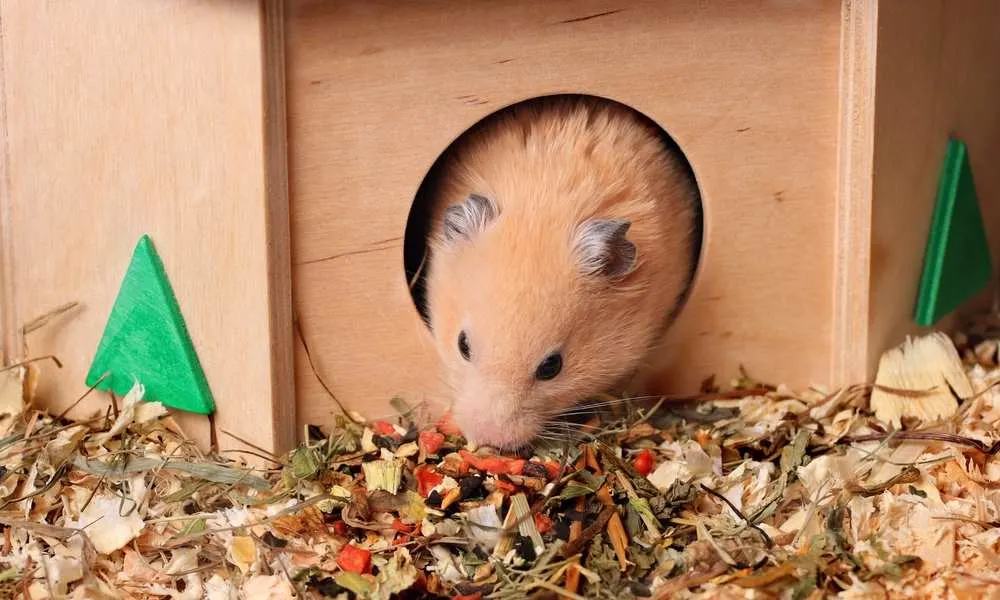
Why Should I Get One?
If you are still wondering whether to get this little cute fluffy animal, these reasons might push you in a positive direction.
- Self-content – If you are looking for an animal that will be happy by just being in its environment, then a hamster is the right choice for you. Rather than jumping around their owners, they will be satisfied by just running in their hamster wheel.
- Cuddles make you calmer – A series of studies have proved that you can become calmer after you have cuddles and squeezed your pet hamster. This is an excellent choice for people who suffer from anxiety or depression.
- Friendliness – Hamsters are amiable animals, and they love being surrounded by other people. So, if you want to introduce your hamster to your friend, you can do it freely without fear that they will bite them.
- Love to go on trips – Your hamster will love going on trips with you, even if they are in their cage most of the time. Once you release them from their tiny home, they will be delighted and immediately start roaming around and exploring the environment.
- Low maintenance – If you’re worried about the costs of owning a hamster – don’t. These animals are not high maintenance at all. Most of their equipment and food can last a pretty long time.

